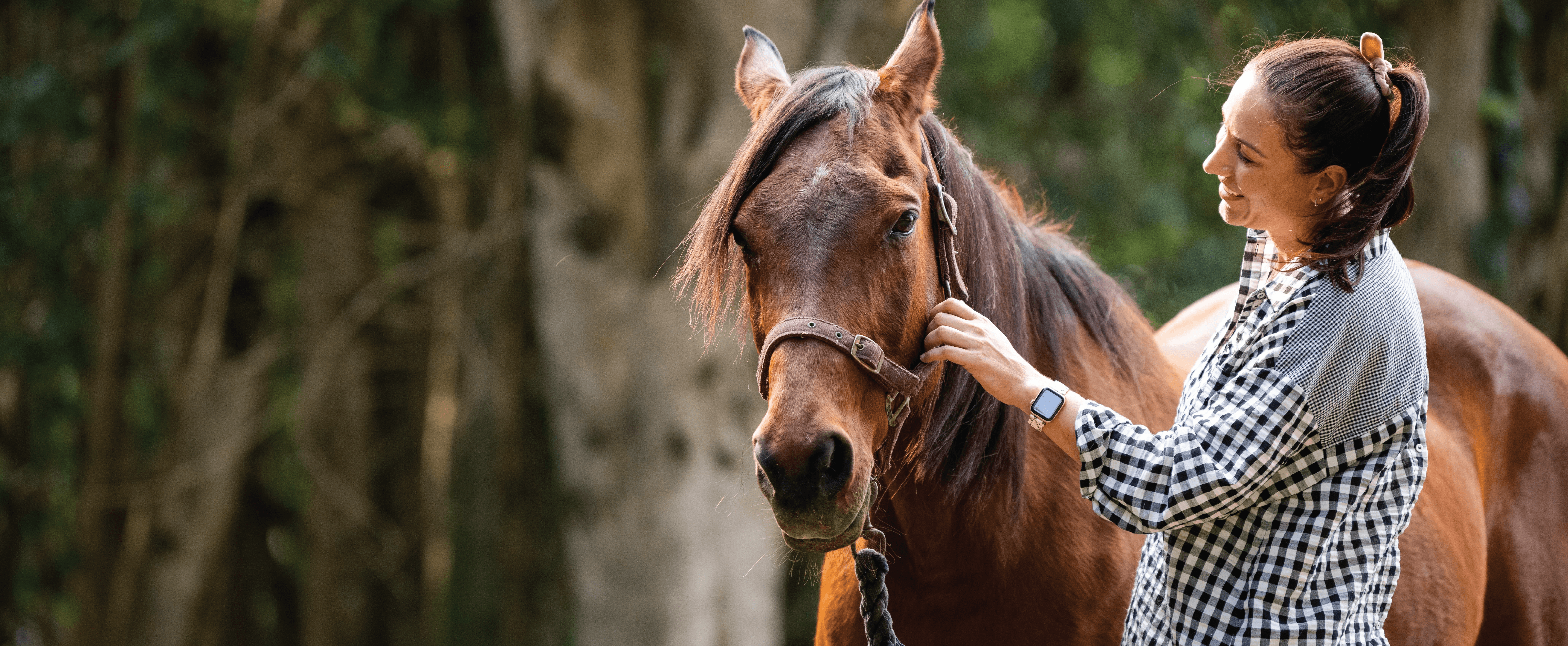The Forage Formula

As winter sets in and pasture growth slows, horse owners face the annual challenge of maintaining consistent, high-quality forage. But forage, or roughage, is far more than just a filler. It’s the foundation of your horse’s diet.
Foraging helps keep them engaged, supports healthy digestion, maintains their weight, and even provides natural warmth through the digestive process. Without enough forage, horses can experience weight loss, behavioural issues, and digestive troubles like colic. So, no matter your horse’s age, workload, or breed, forage should always be the foundation of their feeding routine. And as the colder months approach, making sure they’ve got plenty of it becomes more crucial than ever.
So, why does forage matter?
Horses are natural grazers, which means their bodies are built for eating little and often. With a small stomach and a big, powerful hindgut, they’re designed to process a lot of plant fibre. In fact, horses can spend up to 16 to 20 hours a day grazing — that’s a lot of time spent munching away! So, it’s important we feed them in a way that matches their natural needs.
Constant access to forage helps keep their digestive system running smoothly. It keeps the gut moving and full, reducing the risk of painful conditions like colic. Plus, when horses chew on long-stem forage like pasture or hay, it stimulates saliva production, which helps protect their stomach lining from acid. In the hindgut, forage feeds the beneficial, fibre-fermenting microbes and promotes a positive microbial population. Microbial fermentation of fibre also produces volatile fatty acids (VFAs), which supplies the horse with a source of energy.
How much forage does my horse need?
Horses get most of their energy from the fermentation of fibre into VFAs by the helpful bacteria in their hindgut. To stay healthy, horses need at least 1.5% of their body weight in forage every day to meet their nutritional needs, keep their digestive system happy, and support their overall well-being. For a 500kg horse, that means about 7.5kg of forage each day.
In winter, when pasture growth slows down, it can be tricky to provide enough fresh forage. Pasture quality often drops, leaving your horse with less fibre to munch on. If that’s the case, it’s important to supplement with hay or other forage sources to make sure they’re still getting the nutrition they need.
Also, keep in mind that horses shouldn’t go more than four hours without access to forage. If they do, it can cause digestive problems like gastric ulcers, which we definitely want to avoid!
Did you know?
Your horse’s hindgut acts like their own personal hot water bottle!
When horses digest fibre in their hindgut, it naturally generates heat. This heat helps keep them warm, especially on those chilly winter nights. By feeding your horse plenty of forage, like hay, you’re not only supporting their digestive health but also fuelling that steady warmth from the inside out. It’s one of the best ways to help your horse stay cosy in cooler weather.
Tip: On cold or rainy nights, consider giving your horse a little extra hay to help keep them warm and comfortable.
The power of fibre diversity
As winter sets in and pasture quality drops, many feeding programs rely heavily on just one type of forage, usually hay. While it's super important to provide plenty of long-stem forage, it’s equally essential to keep some variety in your horse's diet.
Offering at least two different types of hay and adding other high-fibre feeds (like sugarbeet pulp, lupin hulls, or chaff) helps create fibre diversity. This promotes a healthy hindgut, maintains a happy microbial balance, and even boosts feed conversion efficiency!
When choosing hay, it’s best to select varieties based on your horse’s individual needs. For example, if your horse needs a little extra help to maintain weight over the colder months, higher-energy hays like lucerne can be a great option. But for horses or ponies at risk of laminitis, stick to low-sugar hays such as Rhodes grass, lucerne, teff, or native grass hays, and avoid the higher sugar ones like oaten, wheaten, barley, or ryegrass hay.
And don’t forget to introduce any new forage gradually, over a 14 day period, to prevent any digestive upsets.
Tip: Slow feeders like hay nets can help your horse eat slowly, keeping them entertained and reducing boredom. Offering forage at multiple feeding points also encourages natural grazing behaviours!
Ensuring horses receive enough forage in winter is more than a matter of feeding, it’s about supporting their physiological and psychological needs during what can be a nutritionally challenging season. By meeting the minimum requirement of 1.5% of bodyweight in forage per day, providing a variety of fibre sources, and utilising slow feeders, you will provide a solid foundation for maintaining your horse’s health during the cooler months.
Need more help with your horse’s diet? Get in touch. We’re here to help!
